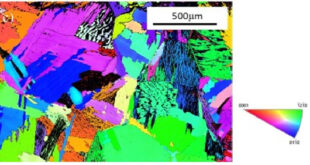Applied Mathematical Modelling, Volume 37, Issue 7, 1 April 2013, Pages 5304-5314.
Evgeniy G. Kolesnichenko, Yuriy E. Gorbachev
Moscow State University, Institute for Mechanics, Moscow 117192, Russia and
Geolink Technologies LLC, St. Petersburg 197342, Russia
Abstract
In our previous paper (Kolesnichenko and Gorbachev, 2010) [1] the general approach for solving kinetic equations for gas mixtures with internal degrees of freedom and for getting corresponding gas-dynamic equations was developed. In the present article we continue our studies and focus on formulating expressions for reaction rates arising in zero-order (Euler) gas-dynamic equations for a one-temperature case. Derived expressions take into account all non-equilibrium effects, that we understand as deviation of the distribution function from its quasi-equilibrium value. As was shown in Kolesnichenko and Gorbachev (2010, 2011) and , for zero-order approximation these effects can be subdivided into two groups. The first group contain the effects caused by the perturbation of quasi-equilibrium distribution function by the physical–chemical processes. We call them “scalar” non-equilibrium effects. Only these effects remain in the spatially homogeneous case. The second group consists of the terms proportional to the velocity divergence and therefor is indicated as spatially inhomogeneous. Both the above-mentioned effects are described via additive corrections to the quasi-equilibrium distribution function. Thus they can be treated separately and give rise to the corresponding terms in the expressions for reaction rates. Those non-equilibrium reaction rates are functions of concentrations of all species presented in the mixture and of the whole set of equilibrium rate constants. This leads to the necessity of developing new approaches to obtaining the reaction rates from experimental data. Traditionally defined an equilibrium constant, that is the function only of the thermodynamic state of the system, can be introduced only in a spatially homogeneous case. It can partially simplify the problem of getting information on reaction rates. In general no such value can be introduced. Final expressions show strong correlations between parallel reactions. One such reaction can affect another one until it vanishes. This can be caused not only by the “scalar” non-equilibrium effects, as it was shown in Kolesnichenko and Gorbachev (2011) [2], but also by spatially inhomogeneous. This means that the derived non-equilibrium terms are not small corrections, but can dramatically change chemical kinetics of the reacting mixture.
 Advances in Engineering Advances in Engineering features breaking research judged by Advances in Engineering advisory team to be of key importance in the Engineering field. Papers are selected from over 10,000 published each week from most peer reviewed journals.
Advances in Engineering Advances in Engineering features breaking research judged by Advances in Engineering advisory team to be of key importance in the Engineering field. Papers are selected from over 10,000 published each week from most peer reviewed journals.

